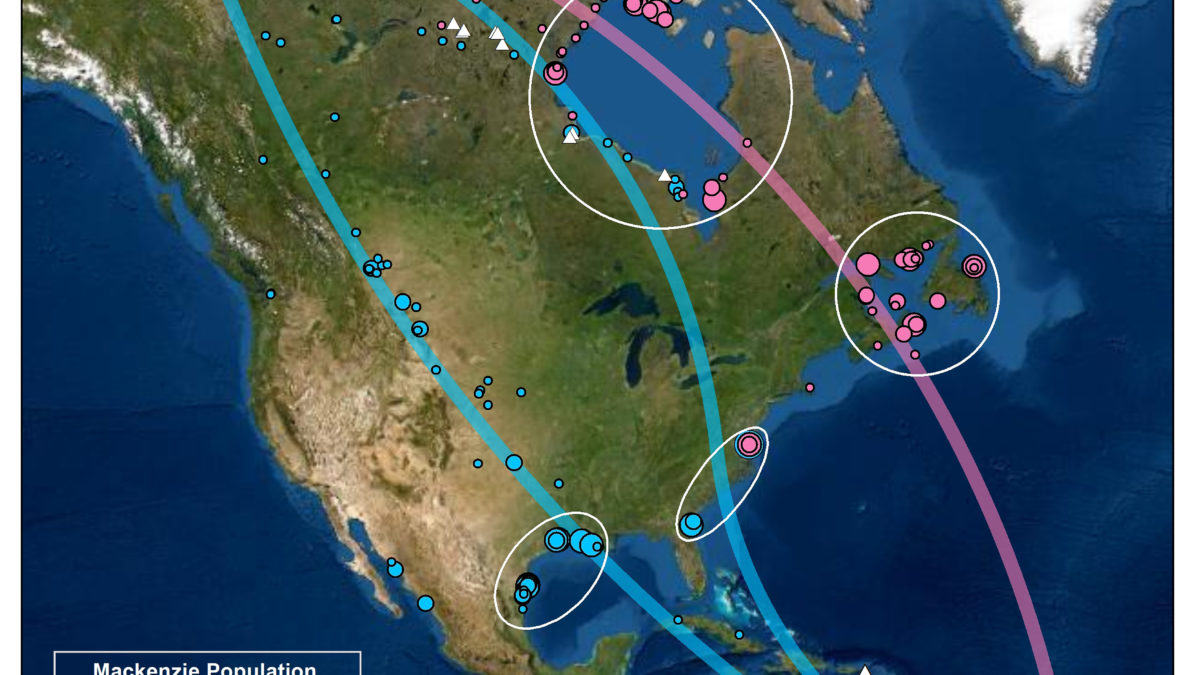The annual cycle of whimbrels

Virginia Cormorants Continue Historic Rise
January 13, 2022
Baselines and Benchmarks
January 14, 2022Map of the annual cycle for whimbrels from the Mackenzie Delta breeding population. This population uses a loop migration route and depends on four major staging areas. During the fall these birds fly out over the open Atlantic and around hunters and storms associated with the Caribbean Basin. Data from CCB.
By Bryan Watts
1/13/2022
When Barry Truitt and I first established and flew aerial transects across the seaside of the lower Delmarva to survey staging whimbrels in the spring of 1994, the marshes were alive with birds. Whimbrels come to this place in April and May to gorge on fiddler crabs before flying to their Arctic breeding grounds. By the mid-2000s, staging whimbrels had declined by 50% and the marshes had an eerily dead feel to them from the air. As we discussed the decline, we could not buy the obvious possibility that local fiddler crabs had declined. Fiddlers have and continue to be overwhelmingly abundant within this system. Our discussion began to shift to other places where whimbrels spend the rest of their year. Could declines that we were finding be caused by factors that the birds were confronting within other locations? Where were the other locations that whimbrels depended on and what were the risks within these places? These questions led to an effort to use satellite transmitters to document the annual cycle. What began in the spring of 2008 as a project to deploy transmitters on whimbrels staging along the Delmarva would grow into a multi-year, multi-partner project to track whimbrels and document their annual cycle. The project would not have been possible without the efforts and field expertise of Fletcher Smith.
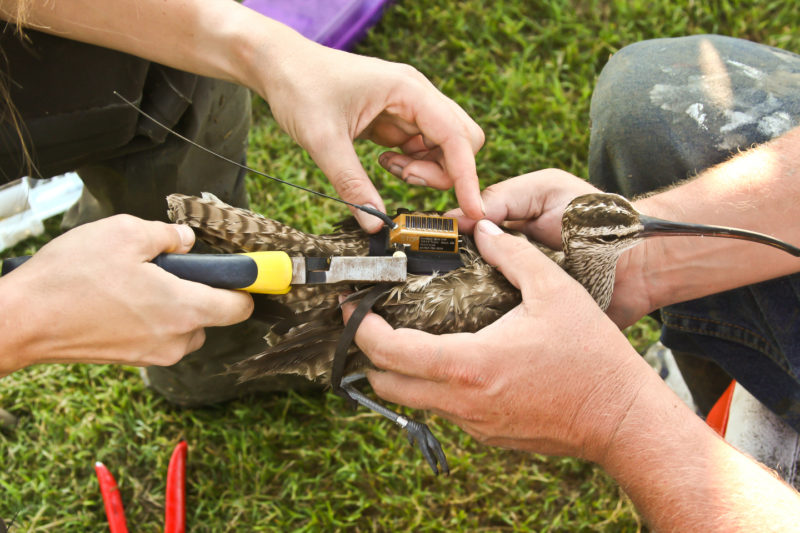
After more than a decade of tracking effort, whimbrel partners including CCB, The Nature Conservancy, Canadian Wildlife Service, Georgia Department of Natural Resources, Mount Allison University and Manomet have published a description of the annual cycle entitled, The annual cycle for whimbrel populations using the Western Atlantic Flyway. The paper provides an overview of the spatial and temporal aspects of the year for both the Mackenzie Delta and Hudson Bay breeding population, both of which use the Atlantic Flyway and stage along the Delmarva Peninsula in Virginia.
The Mack Delta and Hudson Bay populations differ in their use of migratory pathways and their seasonal schedules. Mack Delta whimbrels make long (22,800 km) loop migrations with different autumn and spring routes. Hudson Bay whimbrels make shorter (17,500 km), more direct migrations along the same route during autumn and spring. The two populations converge on the same winter grounds along the northern coast of South America. The two populations also overlap within one spring staging site along the south Atlantic coast of North America. We identified five migratory staging sites including four that were used during autumn and two that were used during spring. The consistent use of very few staging sites suggests that these sites are integral to the annual cycle of both populations and have high conservation value. Whimbrel populations migrate across tens of thousands of kilometers each year but depend on very few and select landscapes. Individual whimbrels have very high site fidelity and return year after year to the same field or patch of marsh. They also have very high situational awareness and if blown off course will correct and continue to their original destination.
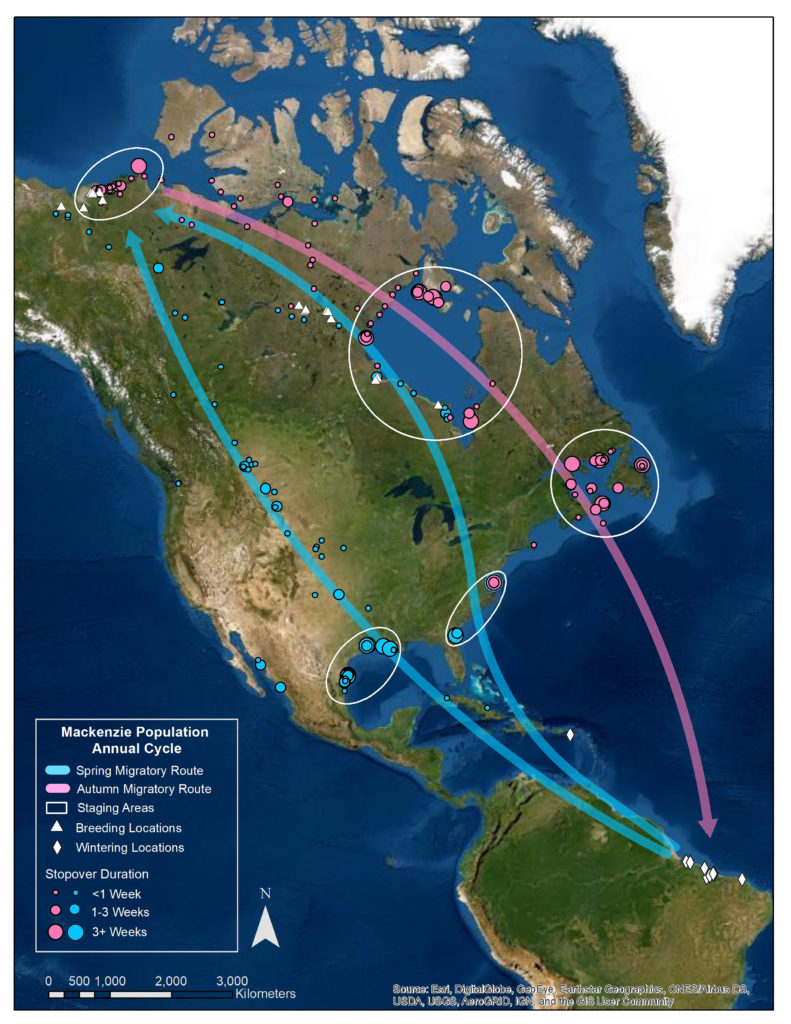
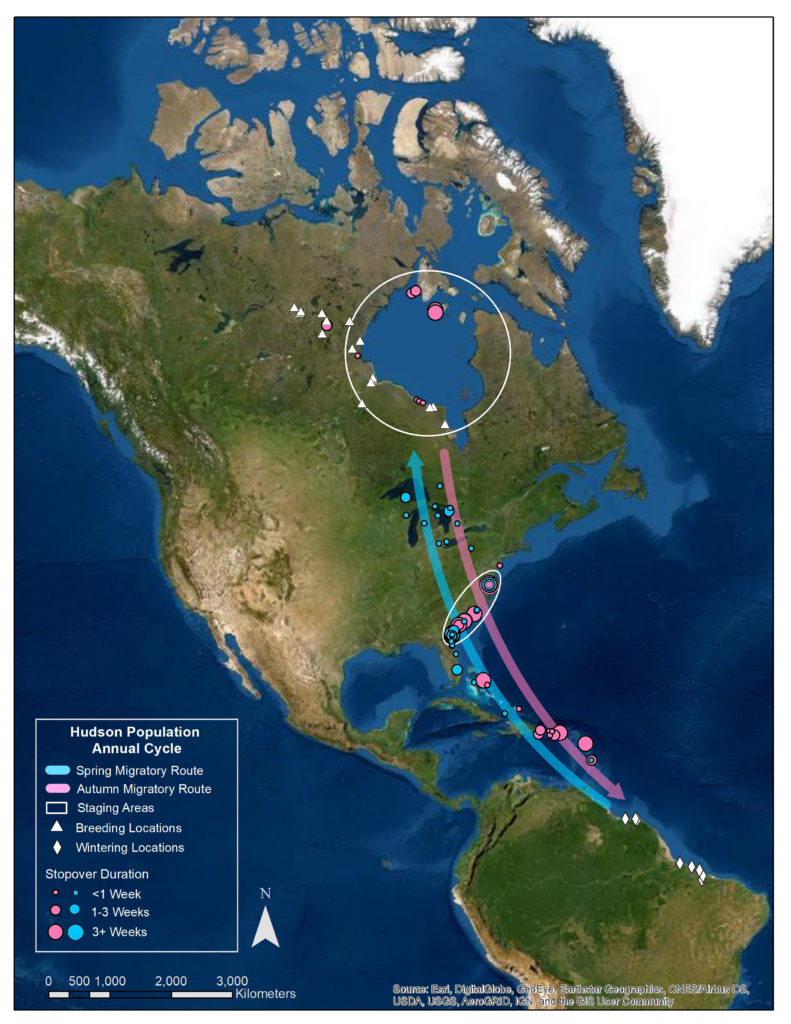
Mack Delta and Hudson Bay whimbrels march to a different drum beat through the year. Mack Delta birds leave the breeding ground, arrive on winter grounds, leave winter grounds and arrive on spring staging sites earlier compared to Hudson Bay whimbrels. The biological significance of these differences in schedule remains unclear.
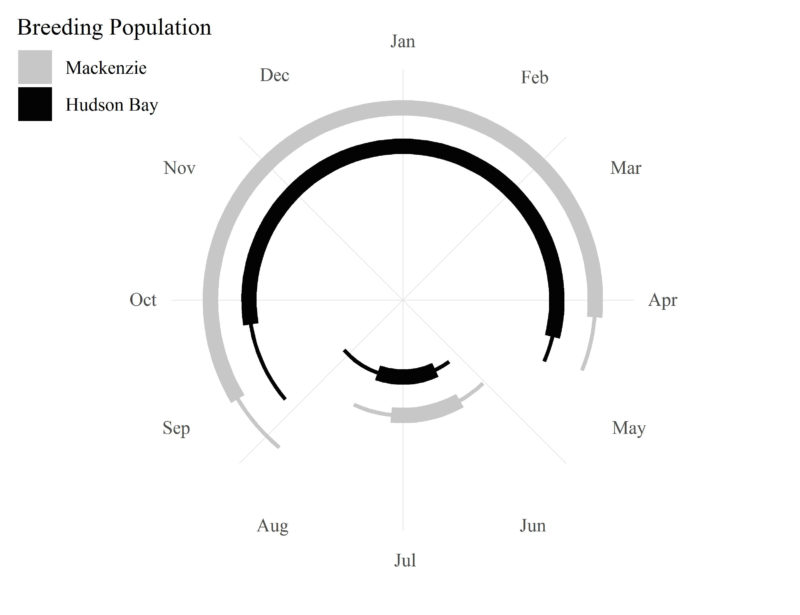
After more than a decade of tracking, some of the initial questions that kicked off the project have been answered. We have identified the areas whimbrel populations depend on and the amount of time they spend in each. The populations use different landscapes that come with different risks. During the fall, Mack Delta birds stage in Atlantic Canada and feed on blueberries and other fruit while Hudson Bay birds stage on the south Atlantic and feed on fiddler crabs. The different routes they use are significant in terms of risk exposure. Hudson Bay birds fly across the Caribbean Basin and are exposed to hunters and hurricane alley while Mack Delta birds fly around hunters and storms. Many Hudson Bay birds make landfall in western areas of northern South America and then move slowly east toward Brazil running the gauntlet of hunters along the way. Mack Delta birds fly directly across the Atlantic to Brazil. Both populations spend most of the year (7.3 months) on the winter grounds compared to only 1.5 months on the breeding grounds and about the same time during each migration. A clear difference between academic research (answering questions for questions’ sake) and conservation research (answering questions to inform management action) is that within the conservation world new information must lead to action designed to facilitate change. Now that we know where birds are spending their time and some of the risks they encounter, the set of relevant questions shifts to how we can tilt the risks more in favor of whimbrels. This important work is ongoing. In November of 2021, the first meeting of the Whimbrel Working Group was held to begin discussions about strategies and how to implement them on a flyway-wide scale.

